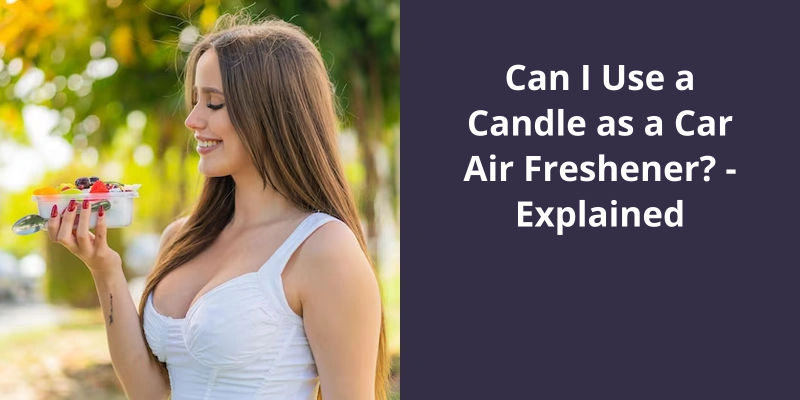To bind water and oil, you typically need an emulsifier. An emulsifier is a substance that allows water and oil to mix together, creating an emulsion. Commonly used natural emulsifiers include egg yolks and mustard, both of which contain lecithin, a molecule with one end that’s attracted to water and another end that’s attracted to oil, effectively binding the two. For non-food applications, substances like beeswax, lecithin, and certain types of clay can be used. It’s critical to blend them correctly with the water and oil components under appropriate conditions to ensure a stable and homogeneous emulsion.

How Do You Stabilize Oil in Water?
The stabilization of oil in water is a crucial process that’s required for a wide range of industrial applications. In order to create stable oil-in-water emulsions, various techniques have been developed over the years. However, one of the most effective methods involves the use of colloidal particles that are treated with short amphiphilic molecules.
These short amphiphilic molecules play a vital role in modifying the surface of colloidal particles, making them partially hydrophobic. This, in turn, enables them to adsorb at the oil-water interface, providing stability to the emulsion. In situ modification of the particle surface using short amphiphiles is a quick and straightforward process that requires minimal expertise, making it an attractive option for many industrial applications.
Another significant advantage of this technique is that it’s environmentally friendly. Unlike other stabilization methods such as the use of surfactants, colloidal particles modified with short amphiphiles don’t have any adverse effects on the environment or human health. Furthermore, these particles can be easily removed from the emulsion after use, reducing the potential for environmental contamination.
While it’s commonly believed that oil and water can’t mix without the use of an emulsifier, there’s a surprising trick to achieve this mixture. In this engaging experiment, the Action Lab Man demonstrates how to successfully mix oil and water without an emulsifier. By removing the dissolved air from water, he creates a readily-mixable solution that’s a practical application in the household. Let’s dive in and discover the scientific process behind this unusual yet effective method.
Can You Mix Water and Oil Without an Emulsifier?
At first glance, it might seem impossible to mix water and oil without an emulsifier. These two substances have fundamentally different chemical properties. For instance, water is a polar molecule, while oil is nonpolar. This means that water and oil molecules have different charges and can’t interact with each other.
By removing the dissolved air from water, we can create a mixture that allows oil and water to interact. This vacuum degassing process is essential because air bubbles can interfere with the mixing process.
The vacuum degassing process involves using a vacuum chamber that creates a low-pressure environment. This low-pressure environment causes the dissolved gases in water to come out of the solution and form bubbles. After the vacuum chamber is turned off, these bubbles collapse, and the water becomes degassed.
Once we’ve degassed water, we can use it to remove grease from clothes. Because oil is less dense than water, it will float on top of the degassed water. We can then use a cloth or paper towel to remove the oil from the surface of the water. This method is effective and can be used as an alternative to using an emulsifier.
The Science Behind Emulsifiers and How They Work to Mix Water and Oil.
- Emulsifiers are molecules with a hydrophilic (water-loving) and a hydrophobic (water-fearing) end.
- They work by positioning themselves between water and oil droplets to form stable emulsions.
- In food, emulsifiers improve texture, mouthfeel, and shelf life.
- Common emulsifiers include lecithin, mono- and diglycerides, and polysorbates.
- Emulsifiers are also used in cosmetics, pharmaceuticals, and industrial applications.
- Research on the health effects of emulsifiers is ongoing, with some studies suggesting they may disrupt gut microbiota and contribute to inflammatory bowel disease.
Source: What’s the method to mix water with oil?..
Despite their apparent differences, oil and water have a complex relationship that goes beyond their inability to mix. While it’s commonly believed that the two substances can’t bond, recent research has shown otherwise. In fact, these two liquids can form unique and intricate molecular structures that may have significant implications in various areas of science and industry. Let’s explore this fascinating phenomenon in more detail.
Can Oil Bond With Water?
On the other hand, oil is a non-polar molecule, meaning it’s no charge. This fundamental difference in their chemical structures makes it impossible for water and oil to bond together on a molecular level. Water molecules will cluster together while oil molecules will do the same, and the two groups won’t mix. This is why we always see oil floating on top of water in cases where they’re mixed.
The immiscibility of water and oil has a profound impact on our daily lives. For example, when we’re cooking, it’s vital to mix oil and water properly so that they don’t separate. Oil is often used in cooking to fry foods, but if it isn’t mixed properly with water-based foods like vegetables or meat, it can ruin the dish. The same goes for salad dressings – if the oil and vinegar aren’t mixed properly, they’ll separate, and the dressing will be ruined. Proper emulsification, which is the process of mixing two immiscible liquids, is crucial in these scenarios.
For example, surfactants – compounds that have both polar and non-polar ends – can be added to the oil-water mixture to help them mix. These compounds are commonly used in cleaning products such as dish soap and laundry detergent. They work by surrounding the oil droplets with their polar ends, and their non-polar ends point outward, allowing them to mix with the water molecules. This process is known as emulsification.
In addition to surfactants, there are other ways that oil and water can be made to mix. One example is the use of an emulsifier, which is a substance that stabilizes an emulsion. Emulsifiers are often added to food products such as mayonnaise, chocolate, and ice cream to prevent the oil and water from separating. In the case of ice cream, for example, egg yolks act as emulsifiers, which is why the ice cream remains smooth and creamy instead of developing lumps of fat.
The Effects of Water and Oil Immiscibility on the Environment, Such as Oil Spills in Bodies of Water and the Challenges of Cleaning Them Up.
The incompatibility of water and oil has devastating consequences on the environment, particularly through oil spills in water bodies. Cleaning up such oil spills is challenging.
There are various ways to incorporate essential oils into water-based products, but the key is to ensure the oils remain stable. Emulsifiers are commonly used to achieve this, allowing the oils to blend seamlessly with the water and stay in suspension. Emulsifiers are essential for mixing two components together and preventing them from separating, making them a crucial ingredient in this process.
How Do You Stabilize Essential Oils in Water?
But when it comes to stabilizing essential oils in water, there are a few additional factors to consider. First, it’s important to choose the right emulsifier for the job. Some emulsifiers work better with certain types of essential oils than others, and some may not be suitable for use in certain water-based products.
One popular choice among DIY enthusiasts is lecithin, which is derived from soybeans and can be used to create stable emulsions of essential oils in water. Other commonly used emulsifiers include polysorbate 20, polysorbate 80, and vegetable glycerin.
In addition to choosing the right emulsifier, it’s important to use the proper techniques when blending your essential oils and water-based ingredients. This may involve heating or cooling your ingredients to achieve the right consistency, or using a blender or immersion blender to create a smooth, homogeneous mixture.
It’s also important to keep in mind that essential oils are highly concentrated and can be irritating or even toxic if not used properly. Be sure to follow recommended usage guidelines and perform patch tests before using any essential oil blends on your skin or in your home.
With the right approach, however, you can create beautiful, fragrant water-based products that offer a range of health and wellness benefits.
Tips for Creating Balanced and Safe Essential Oil Blends for Water-Based Products
- Research and choose essential oils that are safe for use in water-based products.
- Start with a small batch and test the blend before using it in larger quantities.
- Use a carrier oil or emulsifier to help the essential oils mix with the water-based product.
- Follow recommended dilution ratios and safety guidelines for each essential oil used.
- Avoid using citrus and other phototoxic essential oils in water-based products that will be exposed to sunlight.
- Label the final product with a list of ingredients and proper usage instructions.
- Store the essential oils and finished product in a cool, dry place away from direct sunlight.
Understanding the chemistry behind why water and oil don’t mix is crucial for many industries, from food production to the oil industry. While it may seem like a simple concept, the non-polar structure of oil molecules and the attraction between like molecules play a key role in keeping these two substances separate. In the next part of this article, we’ll explore how this separation has important consequences for everyday life.
What Keeps Water and Oil From Mixing?
On the other hand, water molecules are polar with a slight negative charge at one end and a slight positive charge at the other end. This makes water a highly effective solvent because it can dissolve other polar substances. However, when it comes into contact with oil, the water molecules cluster together, forming hydrogen bonds, and repel the oil molecules. This repulsion occurs because oil is a nonpolar substance and doesn’t have polar groups that can interact with water molecules, unlike polar substances such as sugar or salt.
The difference in the polarities between water and oil is also reflected in the intermolecular forces that hold the molecules together. As a result, oil is much less dense than water and floats on top of it. This difference in density also prevents the two liquids from mixing as the oil will always float on top of the water.
Another factor that keeps oil and water from mixing is the surface tension of water. Water molecules are strongly attracted to each other, which creates a surface tension that allows water to form droplets and resist external forces such as gravity. Oil droplets tend to coalesce and form larger droplets, which then float on top of the water.
The Applications of the Principle of Water and Oil Not Mixing in Real-Life Situations
- Salad Dressing: When oil and vinegar are combined to make a salad dressing, they separate into layers due to the principle of water and oil not mixing.
- Oil spills: The principle of oil and water not mixing is why oil spills on water can be so devastating, as it creates a thin film on the water’s surface that can harm aquatic life.
- Cooking: When frying food, the principle of oil and water not mixing is essential. If water comes into contact with hot oil, it can cause a dangerous oil splatter and potentially cause injury.
- Cosmetics: Oil and water don’t mix in cosmetic products such as lotions and creams, which helps to keep the product’s texture consistent and ensures that it stays on the surface of the skin.
- Cleaning agents: Many household cleaning products rely on the principle of water and oil not mixing to work effectively. For example, dish soap and laundry detergent are designed to break down oily stains and prevent them from reattaching to fabrics.
Conclusion
In conclusion, emulsifiers play a critical role in food production, allowing for the successful binding of oil and water – two substances that normally don’t mix well. With emulsifiers, foods like salad dressings, mayonnaise, and margarine can be created with ease, all while imparting a smooth, creamy texture that consumers crave. Additionally, emulsifiers can help extend a food's shelf life, decreasing food waste and increasing profitability for producers. While there may be concerns about the safety of certain emulsifiers, it’s clear that these substances are an essential component for the modern food industry.





